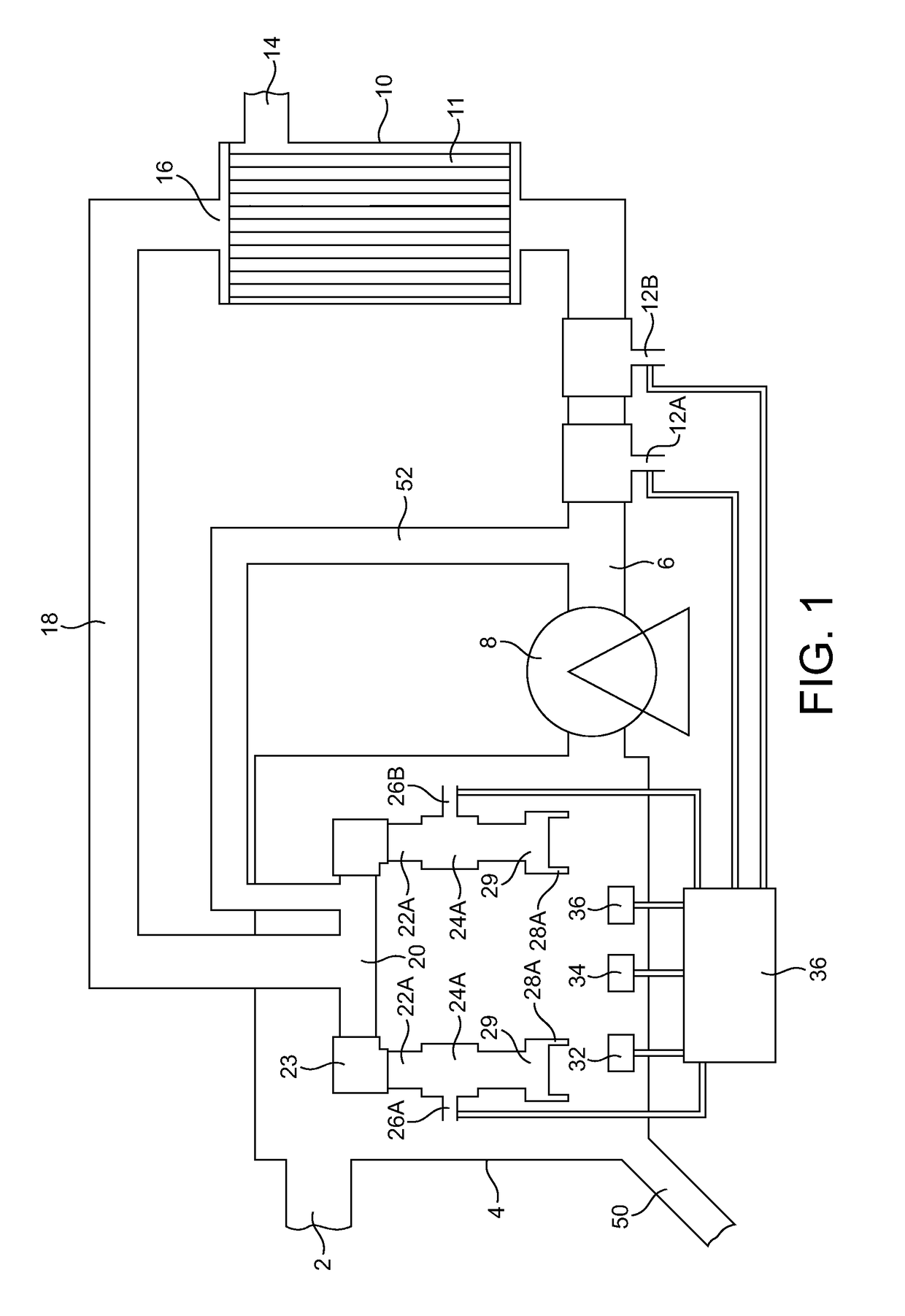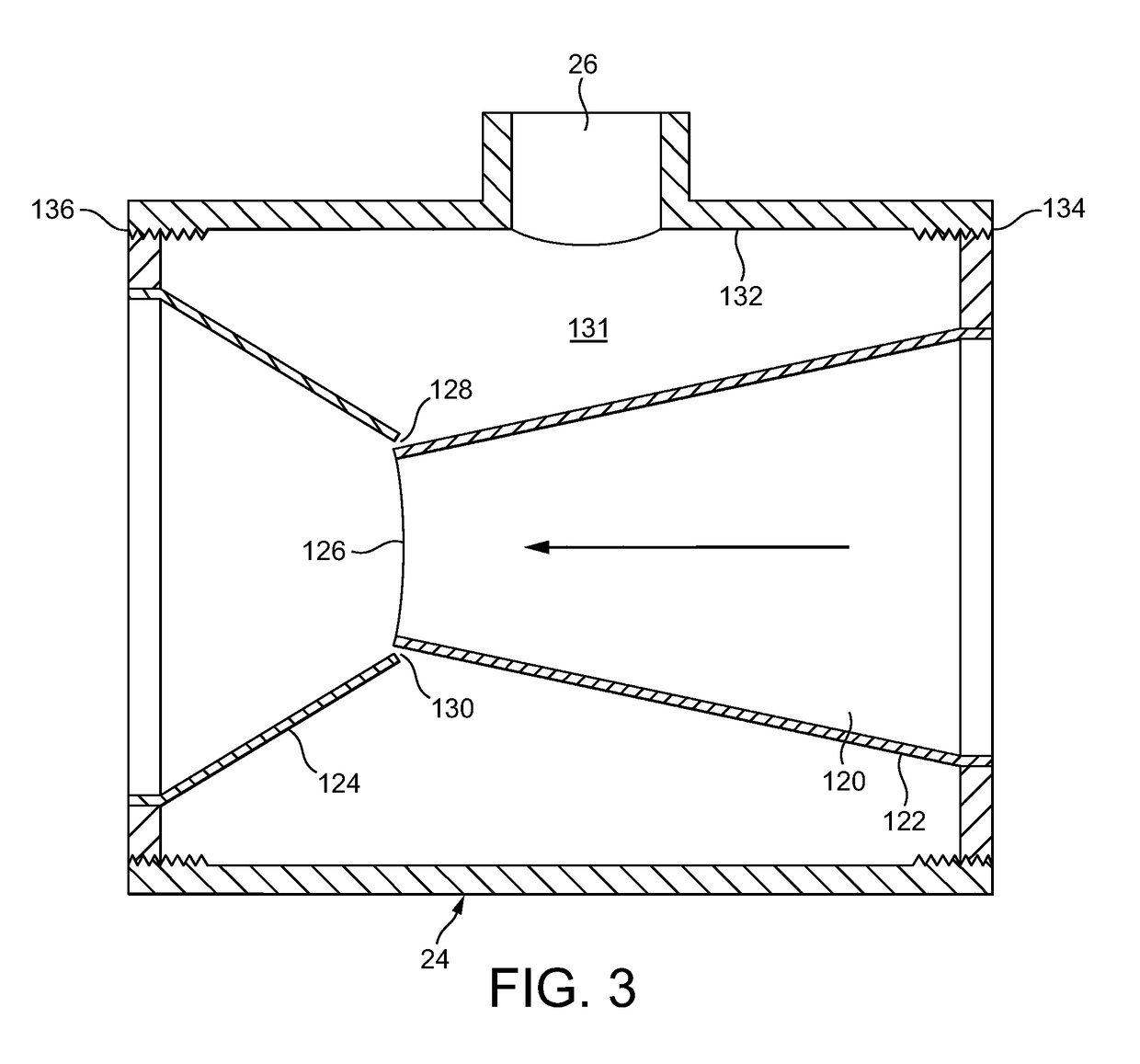Apparatus for treatment of aqueous liquid
a technology for aqueous liquid and apparatus, which is applied in the direction of biological water/sewage treatment, filtration separation, separation processes, etc., can solve the problems of preventing the maximum benefit of tubular cross-flow membrane filters in the waste water treatment process, and keeping the inner bore surfaces of membranes clean, so as to achieve the effect of reducing evaporative heat loss and increasing the ra
- Summary
- Abstract
- Description
- Claims
- Application Information
AI Technical Summary
Benefits of technology
Problems solved by technology
Method used
Image
Examples
Embodiment Construction
[0026]Like parts in different Figures are referred to below by the same reference numeral. The use of the Suffix A denotes an element particularly adapted for the introduction of oxygen and the Suffix B denotes an element particularly adapted for the introduction of air.
[0027]Referring to FIG. 1, a flow of aqueous liquid having a varying oxygen demand is conveyed continuously to an inlet 2 in the side of an open treatment vessel 4. The vessel 4 may be of any convenient capacity. Typically, it holds from 50 to 5000 m3 of liquid. Typically, the depth of the liquid in the vessel 4 is in the range 3 to 15 metres. The liquid can be, for example, domestic or industrial waste water having a BOD and / or a COD, the magnitude of the oxygen demand being dependent on the concentration and nature of the organic or chemical pollutants present therein. For example strong untreated domestic waste water may have a BOD of 400 mg / l and a COD of 1000 mg / l. The waste water typically contains aerobic bact...
PUM
| Property | Measurement | Unit |
|---|---|---|
| COD | aaaaa | aaaaa |
| COD | aaaaa | aaaaa |
| pressure | aaaaa | aaaaa |
Abstract
Description
Claims
Application Information
 Login to View More
Login to View More - R&D
- Intellectual Property
- Life Sciences
- Materials
- Tech Scout
- Unparalleled Data Quality
- Higher Quality Content
- 60% Fewer Hallucinations
Browse by: Latest US Patents, China's latest patents, Technical Efficacy Thesaurus, Application Domain, Technology Topic, Popular Technical Reports.
© 2025 PatSnap. All rights reserved.Legal|Privacy policy|Modern Slavery Act Transparency Statement|Sitemap|About US| Contact US: help@patsnap.com



